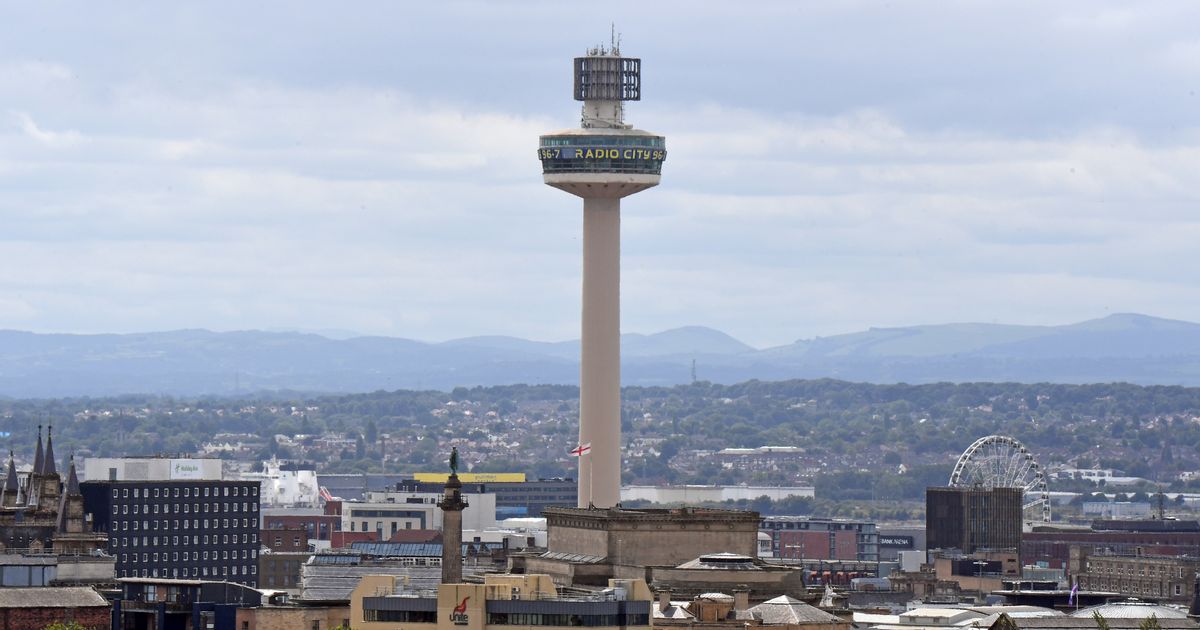You’ll likely say or have heard of these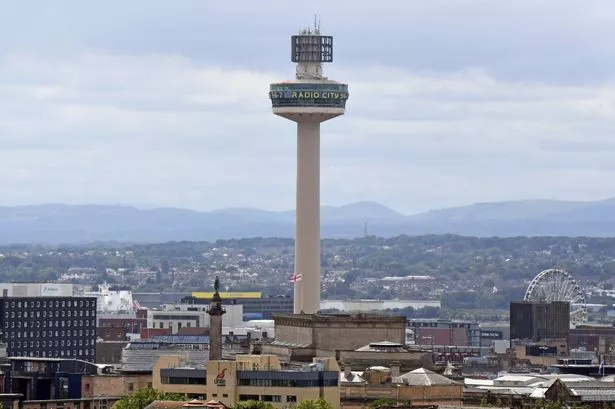 ‘Radio City Tower’ on the Liverpool skyline(Image: Photo by Colin Lane)
‘Radio City Tower’ on the Liverpool skyline(Image: Photo by Colin Lane)
When a word or phrase sticks in Liverpool it is likely to stay around for a very long time. And that definitely applies to many different place names or buildings across our region.
Over time we’ve come to know them by shortened versions of their real names, or by their popular nicknames. In many cases, we’re reluctant to call them anything else.
The ECHO previously shared a list of nicknames that Scousers will always choose over ‘official’ place names, from Bombed Out Church to the bubble bus stops – but there are so many more we use in our every day life across the region. Now, we take another look back at a number of them and how they acquired these non-official names.
READ MORE: Family photos capture characters ‘on the buses’ in 1950s LiverpoolREAD MORE: Changing face of iconic Georgian Quarter building now home to pub
Here are 39 nicknames Scousers give to places and buildings rather than using their official names. From shortened place names to nicknames they’ve acquired along the way, you’re likely to say or have heard of many from our list.
This list isn’t intended to be comprehensive and includes just a number of previous suggestions from ECHO readers on social media. See how many you know in our list below.
39. The Asda – Asda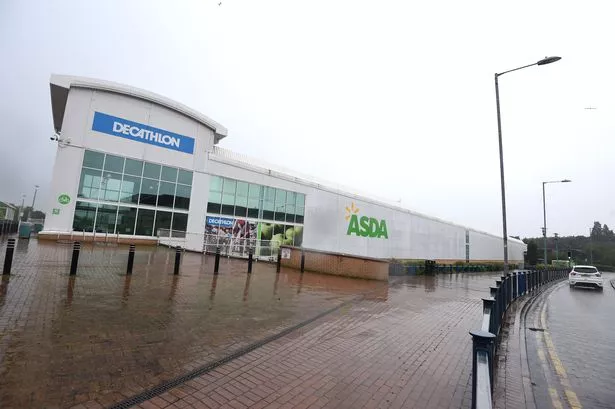 Asda in Huyton
Asda in Huyton
It’s been 60 years since Asda was established in the UK. But if you’ve grown up in and around the city, you’ll likely refer to a slightly varied version of its name.
In Liverpool, many refer to their local branch as “The Asda.” It’s not far off its official name – but this is very much a Liverpool thing.
38. Tocky – Toxteth
Full of history and culture, Liverpool has got its fair share of quirky place names – including Toxteth – which has acquired its own nickname through the decades. Historically, the area means “Toki’s landing place”, from the Old Scandinavian first name Toki and Old Norse “stod”.
It was once called “Stochestede”, becoming “Tokestath” by 1212, and much of the land was wooded until the 17th century – serving as a hunting park for King John in 1204. Many from the city refer to the area by the nickname Tocky for short.
37. Speke Airport – Liverpool John Lennon Airport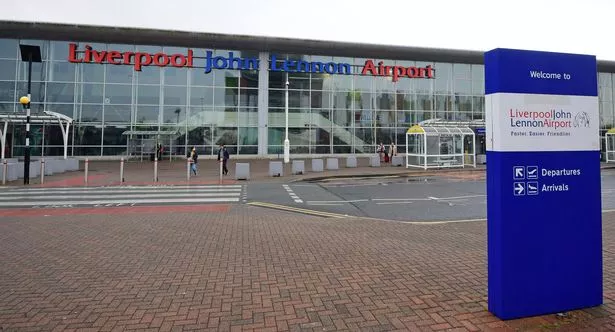 Liverpool John Lennon Airport, Speke(Image: Photo by Colin Lane)
Liverpool John Lennon Airport, Speke(Image: Photo by Colin Lane)
Liverpool John Lennon Airport, as many will know, was originally called Speke Airport. Its old terminal and Art-Deco style tower built in the 1930s, were a classic throwback to the golden age of air travel.
The airport was renamed Liverpool John Lennon Airport in 2001 after the Beatle who died in December, 1980. The new £42.5 million passenger terminal was opened in 2002 by Queen Elizabeth II.
36. The Bullring – St Andrew’s Gardens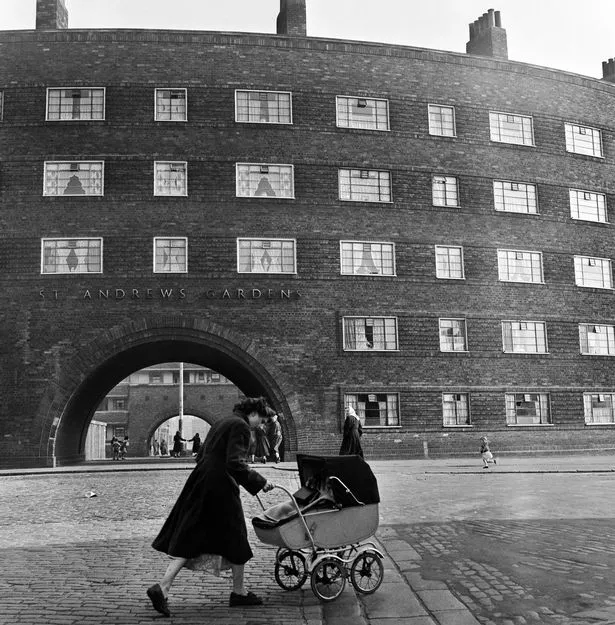 St Andrews Gardens, 1954(Image: Mirrorpix)
St Andrews Gardens, 1954(Image: Mirrorpix)
St Andrew’s Gardens was built in the mid 1930s to house council tenants on Copperas Hill. The multi-storey accommodation was designed by architect John Hughes and due to its shape, was commonly known as the Bullring.
Today, the last surviving bullring in Liverpool is home to hundreds of students from the University of Liverpool and Liverpool John Moores University. In recent years, it featured in BBC drama The Responder with Martin Freeman.
35. The Echo Arena – M&S Bank Arena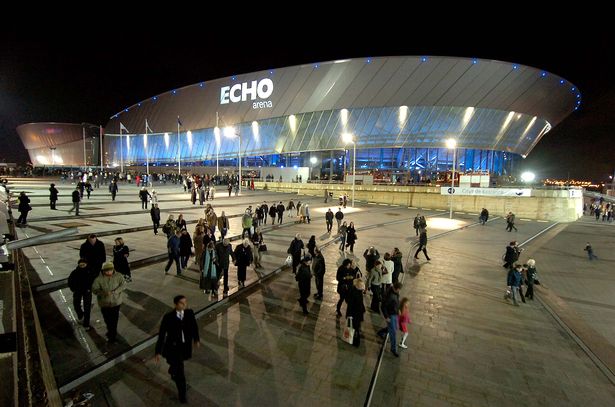 The ECHO Arena before its official launch(Image: Photo by Andrew Teebay)
The ECHO Arena before its official launch(Image: Photo by Andrew Teebay)
It’s been more than 15 years since Liverpool’s ECHO Arena, now known as the M&S Bank Arena, officially opened its doors. Opening on January 11, 2008 with the official opening ceremony for the European Capital of Culture, the venue launched a year long celebration of all things Liverpool.
The venue itself of course still exists, but you can no longer visit it by the name it originally had, as The Liverpool ECHO was the naming sponsor of the arena from 2008 until early 2019. But many still call it the ECHO Arena.
34. Cantril Farm/Canny Farm – Stockbridge Village
It’s been decades since tens of thousands of residents from inner-city Liverpool left to start new lives on new housing estates. And a number of them set up a new life in Cantril Farm.
Cantril Farm, two-thirds of which existed under Knowsley Borough Council control from 1974, changed its name to Stockbridge Village in 1983. It’s still affectionately known as ‘Canny Farm’ to many.
33. Birkenhead Tunnel – Queensway Tunnel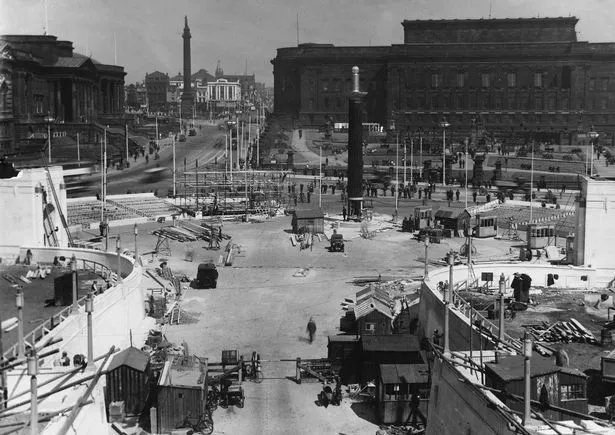 Scaffolding in place at Old Haymarket, Liverpool, ahead of the opening of the new Queensway road tunnel linking Liverpool to Birkenhead under the River Mersey. July 1934(Image: Mirrorpix)
Scaffolding in place at Old Haymarket, Liverpool, ahead of the opening of the new Queensway road tunnel linking Liverpool to Birkenhead under the River Mersey. July 1934(Image: Mirrorpix)
Last year marked 90 years since the Queensway Tunnel officially opened. Often referred to as the ‘Birkenhead Tunnel” or “Old Tunnel,” work first began back in December 1925, with the tunnel being dug from either side of the river and meeting in the centre.
When the tunnel was finally completed and opened on July 18, 1934, it had racked up costs of £8m. This is equivalent to around half a billion pounds today.
32. Wallasey Tunnel – Kingsway Tunnel
Decades ago it was established that a second Mersey Tunnel was required to ease pressure on the Queensway Tunnel, which was struggling to cope with the rise in post-war traffic. The project to create a new tunnel was authorised in 1965, with the five year construction job starting in 1966.
The new Kingsway Tunnel – commonly referred to as the Wallasey Tunnel – was officially opened by Queen Elizabeth II on June 24, 1971. It has been taking people between Liverpool and Wallasey ever since.
31. The Mystery – Wavertree Playground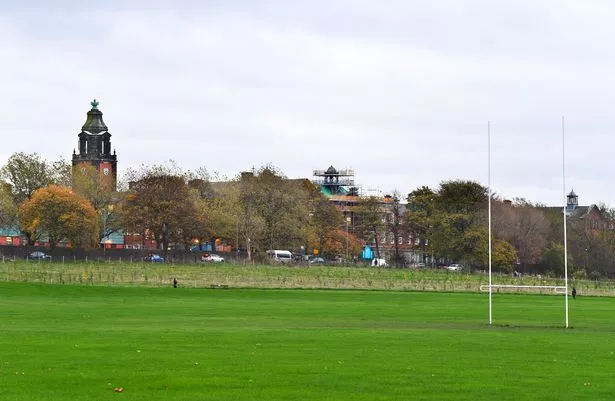 Wavertree Mystery Playground(Image: Photo by Andrew Teebay)
Wavertree Mystery Playground(Image: Photo by Andrew Teebay)
The ECHO previously reported how Wavertree Playground – known as The Mystery – was a magnificent gift to the city of 108 acres of land, which became our famous recreation and showground. At this time, in May 1895, when the site was being laid out as a park, the name of the donor was still withheld at his request.
This is said to be where “The Mystery”, the popular name for the ground, got its nickname. The donor (who never actually publicly dissociated his name from the project) was Liverpool businessman and philanthropist, Philip Holt.
30. Kenny – Kensington
Kensington takes its name from the road of the same name and is thought to have taken its name from the other Kensington in London. The settlement grew along the important coach road that linked Liverpool to Prescot, initially as a home for wealthy merchant classes before more housing was built for workers as Liverpool boomed as a port.
Like other towns across the city, Kensington has a shortened nickname. Many residents refer to it as “Kenny.”
29. The Bombed Out Church – Church of St Luke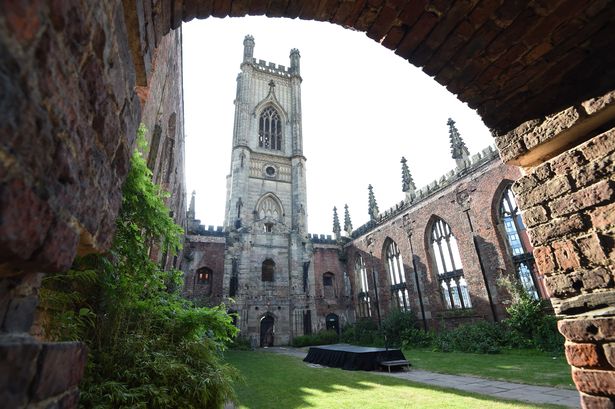 St Luke’s Church(Image: Andrew Teebay Liverpool Echo)
St Luke’s Church(Image: Andrew Teebay Liverpool Echo)
Bombed and burnt out during the Luftwaffe’s Blitz on Merseyside, only the shell of St Luke’s Church in Liverpool city centre remains. Today we know it as a mainstay of the city centre’s architecture, a place to visit for one-off, quirky cultural experiences. Before the bombing on May 6, 1941, regular worshippers attended St Luke’s and there were also stained glass in the windows, where now only fragments survive, including one of Liverpool’s hidden Liver Birds.
Since the bombing, St. Luke’s has been affectionately known as “The Bombed-Out Church”. Today, it is home to fantastic events throughout the year, as well as a meeting spot for the end of a night out or organised protests.
28. Crocky – Croxteth
Croxteth – another historic area in the city – comes from the Old Norse word “Croc” and Old English “staep” – meaning “Croc’s landing place” or “river-bend landing place. It was known as “Crocstad” in 1257, becoming “Croxsath” by 1297.
Vikings had sailed up the River Alt and established a settlement in the area in the ninth century. Like Toxteth with Tocky, Croxteth is often referred to as “Crocky.”
27. Dovey – Dovecot
Like other areas of Liverpool – it’s not hard to figure out how Dovecot got this nickname. The area borders Knotty Ash, West Derby Broadgreen and Roby and has a long history.
But many locals like to refer to it as ‘Dovey.’ And there is clearly a theme of how Scousers nickname places when you think of other areas like Tocky and Crocky.
26. The Vale – Belle Vale
Located in south-east Liverpool, Belle Vale was the largest pre-fabricated housing estate in Britain – with more than 1,000 houses built to provide affordable accommodation for people whose homes were destroyed during the Blitz. Generations have lived in the area and come to know it affectionately as ‘The Vale.’
But some would argue that it isn’t the only area known by this nickname. Many in Liverpool refer to Walton Vale as ‘The Vale,’ or Aigburth Vale.
25. Two Dogs – Huyton
“Huyton, Huyton / Two Dogs Fightun’ / One’s a Black and /One’s a White ‘un.” The above poem is an old rhyme of unknown origin, mentioned by J.E. Lloyd in ‘English Villages in Rhyme.’
It was published in the Geographical Magazine 1944. Now, the town of Huyton is often nicknamed ‘Two Dogs’ after the poem.
24. The bubble bus stops – Queen Square Bus Station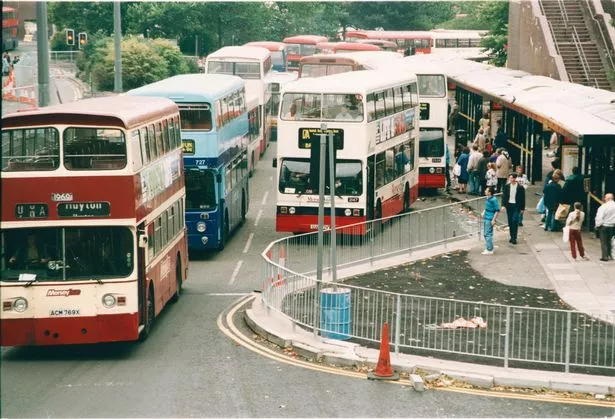 Buses at Roe Street, Liverpool, in August 1995(Image: Mirrorpix)
Buses at Roe Street, Liverpool, in August 1995(Image: Mirrorpix)
One of the biggest changes to Liverpool city centre in recent memory was the demolition of the Roe/Hood Street Gyratory. This was to build Queen Square bus station in 1996.
The old gyratory had been known locally as the ‘bubble bus stops’ due to the curved plastic design of its shelters. These took up the length of both Roe and Hood Street.
23. The Ralla – The Loop Line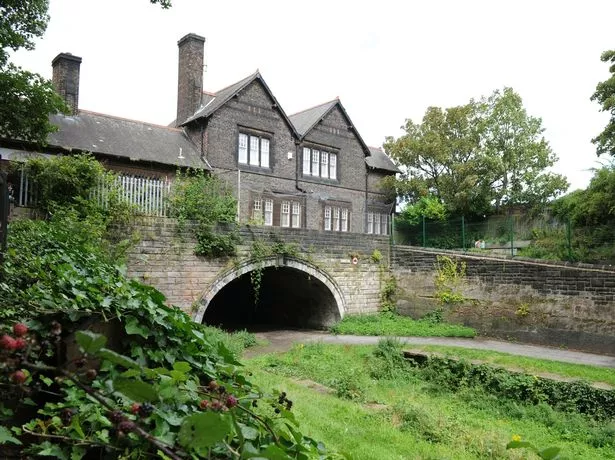 A tunnel on the disused railway, Liverpool Loop Line(Image: Handout)
A tunnel on the disused railway, Liverpool Loop Line(Image: Handout)
The Loop Line, also known as the Ralla, is a 10-mile path for walkers and cyclists along a disused railway line in Merseyside. It is believed to have taken its nickname because of its railway history.
Traffic free for visitors and commuters, the popular route once belonged to British Rail but was abandoned in 1986, later being converted into a cycle path. Many start the route right from Halewood.
22. Scottie Road – Scotland Road
One of the busiest roads in Liverpool, Scotland Road is part of the A59 road and runs through the Vauxhall area, seeing many pass through every day. But everyone knows it bay its nickname. Scottie Road.
There is so much history packed into this stretch of road. Built in the 18th century, its population swelled in the Victorian era with a large Irish community coming to settle in the area.
21. Radio City Tower – St Johns Beacon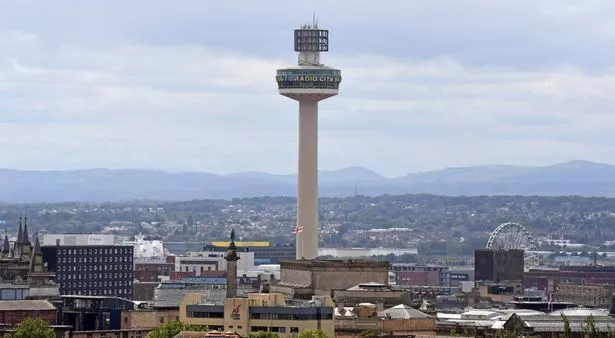 ‘Radio City Tower’ on the Liverpool skyline(Image: Photo by Colin Lane)
‘Radio City Tower’ on the Liverpool skyline(Image: Photo by Colin Lane)
St Johns Beacon has been a familiar sight in the city centre for decades. The beacon, known locally as the Radio City tower, is one of our city’s most famous landmarks and its presence dominates the skyline.
Completed in 1969, the striking building took five years and boasts striking views of the city from dizzying heights of 138 metres. Once the tallest building in Liverpool, beacon’s main purpose at first was to act as a ventilation shaft to the shopping centre below, but the tower became famous later in the 1970s for its signature revolving restaurant. In April 2024 it was announced that Radio City would be rebranded under a new name – Hits Radio Liverpool – and the station would be leaving the beacon. The final radio show was broadcast from St Johns Beacon on December 24 2024 and the station left soon after. A future use for the beacon has not yet been announced.
20. Fazakerley Hospital – Aintree Hospital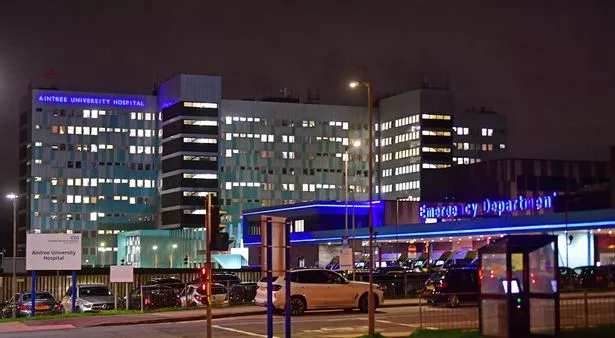 Aintree University Hospital(Image: Photo by Colin Lane)
Aintree University Hospital(Image: Photo by Colin Lane)
For years Aintree University Hospital and the neighbouring Walton Centre have been helping people from across Merseyside and beyond. But despite their names, Aintree University Hospital is not located in Aintree and you will also not find The Walton Centre in Walton.
Both sites are located on Lower Lane in Fazakerley. Hence the nickname, Fazakerley Hospital.
19. The Strand – Strand Street
At the epicentre of Liverpool city centre, ‘The Strand’ has seen thousands of commuters pass through. It is surrounded by so many historic and listed buildings.
It is also closely located to some of our city’s oldest streets. Technically Strand Street, it is known to many as simply ‘The Strand.’
18. The Rocket – Start of M62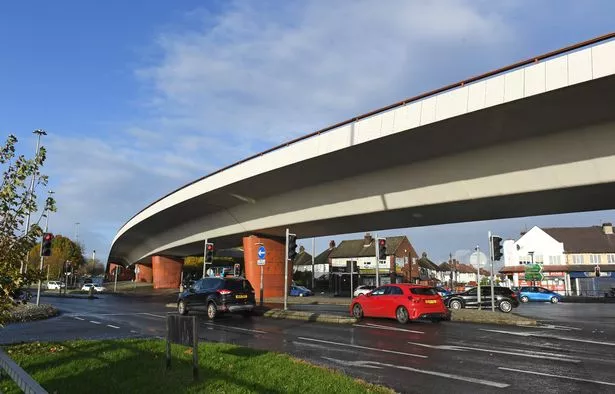 Queens Drive flyover at the Rocket, Liverpool(Image: Photo by Colin Lane)
Queens Drive flyover at the Rocket, Liverpool(Image: Photo by Colin Lane)
It’s easy to whizz past The Rocket pub at the end of the motorway on the way into the city centre and for years, the start of the M62 has also adopted the name. The original pub in Broadgreen first stood in the path of the M62 near a roundabout.
Named after the Stephenson’s steam engine, Rocket, which broke down near the site, the original pub closed in the 1970s and was knocked down to make way for new lanes for the M62, before being rebuilt on Bowring Park Road in 1982. Today, it is still known as an iconic meeting place for football coaches or anyone coming into Liverpool.
17. The Raz – The Blue Angel nightclub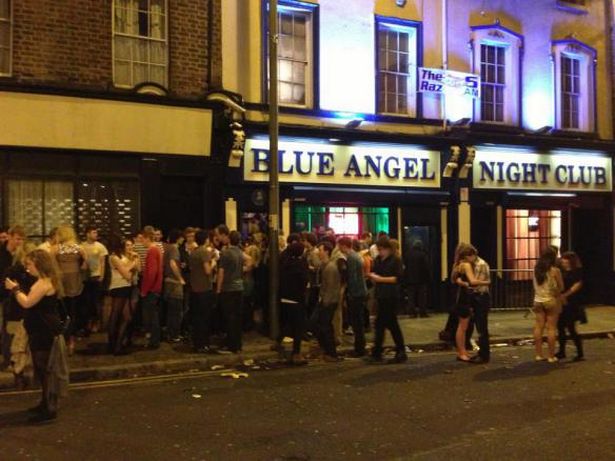 The Blue Angel, Liverpool city centre
The Blue Angel, Liverpool city centre
Located on Seel Street in the city centre, The Blue Angel has welcomed thousands of clubbers from across Merseyside – and if you’ve ever been a student in Liverpool, there’s a high chance you’ve been there. The venue itself has been open since 1939 and was historically a jazz club in the 1960s, which saw it quickly become a Liverpool institution.
It is famous for many things – legends such as The Beatles, Rolling Stones and Bob Dylan are known to have played in the club. Despite its huge blue wording showing its name to be ‘Blue Angel,’ it also gets called ‘The Raz’ as it briefly changed its name to the Razzamataz in the 80s, before reverting back to the Blue Angel a short time later.
16. ‘The offie’ – An off licence
In Liverpool, many don’t refer to their local off license as just that – or by its official shop name. If you’re in the city and you hear someone referring to ‘the offie,’ they will mean their local off licence.
15. ‘The ozzie’ – A hospital
This is very similar to the previous example listed. And it is very much a Liverpool thing too.
Instead of referring to your local hospital by its full name, or just the hospital, many Scousers will say ‘the ozzie.’
14. ‘Dickie Lewis’ – Lewis’s statue of Sir Jacob Epstein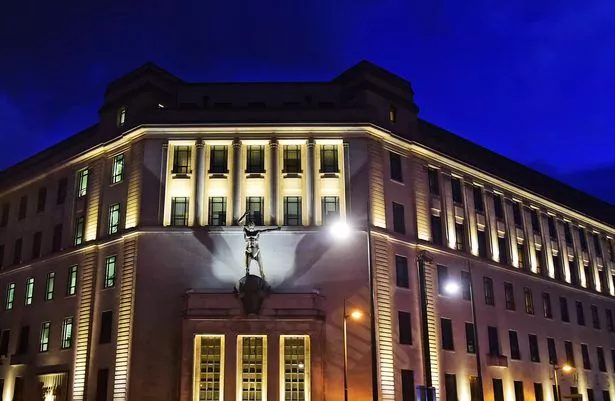 The Lewis’s building and the ‘Dickie Lewis’ statue (Image: Colin Lane/Liverpool Echo)
The Lewis’s building and the ‘Dickie Lewis’ statue (Image: Colin Lane/Liverpool Echo)
One of its most famous features of the historic Lewis’s building is a statue of a nude man by Sir Jacob Epstein. It was unveiled for Lewis’s Centenary celebrations in 1956 with it’s official title of Liverpool Resurgent.
However, generations will more likely know it as ‘Dickie Lewis’. In the days before mobile phones, it was a common to meet up with friends in town, telling them “meet under Dickie Lewis’” at a given time.
13. Home and Bargain – Home Bargains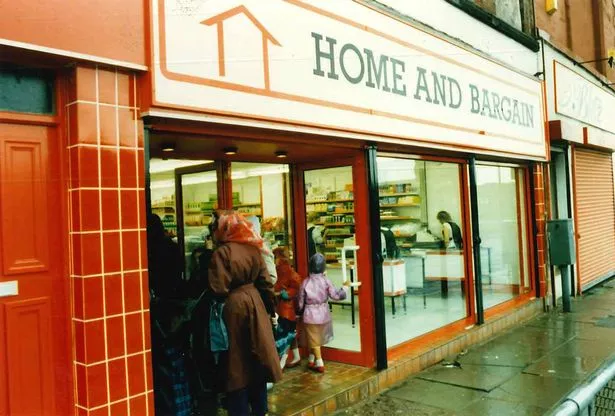 One of the first Home & Bargain stores opened in Breck Road, Liverpool
One of the first Home & Bargain stores opened in Breck Road, Liverpool
In 1976, it was 21-year old entrepreneur Tom Morris, son of a Scotty Road shop keeper, who opened his first store in Old Swan. And from there, Home Bargain has had phenomenal success in almost half a century in business
Back then, of course, the shop was known as Home And Bargain, a name that has still stuck with people in the city and officially changed back in 1995. The shop arguably has something for everyone, from kids wanting pocket money toys or students stocking up their larder with noodles.
12. The Townie – Kirkby town centre
11. ‘Over the water’ – Wirral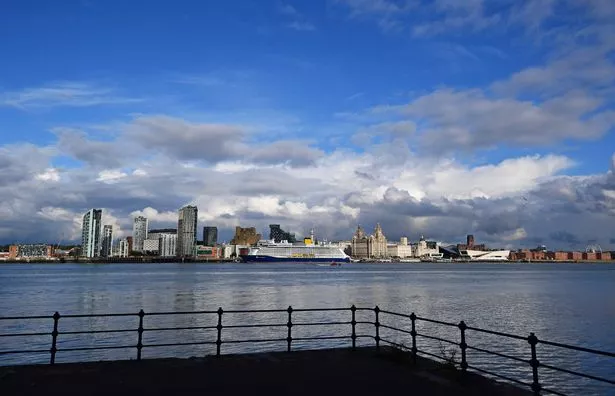 A view of Liverpool waterfront from Wirral(Image: Colin Lane/Liverpool Echo)
A view of Liverpool waterfront from Wirral(Image: Colin Lane/Liverpool Echo)
A Merseyside peninsula, Wirral – also called ‘The Wirral’ by many – is home to thousands. Going ‘over the water’ is used when someone means they’re heading from Liverpool to Wirral.
Wirral has a long history – as human activity has been there for thousands of years. Artefacts found by archaeologists suggest evidence of hunter-gatherers of the Mesolithic period and the peninsula is mentioned in the Doomsday Book of 1086.
10. Upper Parly – Upper Parliament Street
Upper Parliament Street runs up the city centre and through to Toxteth. Many shorten the street name to ‘Upper Parly’ for short.
9. Pub in the Park – Allerton Hall Farm
Allerton Hall Farm pub is a pretty sight as you drive up, surrounded by a huge green space with picnic tables for those warmer days. Because of this, many refer to it as ‘The Pub in the Park.’
The pub, on Springwood Avenue, is near Woolton and surrounded by Clarke Gardens. You can enjoy a woodland walk along a public footpath that runs right around the pub.
8. Greatie Market – Great Homer Street Market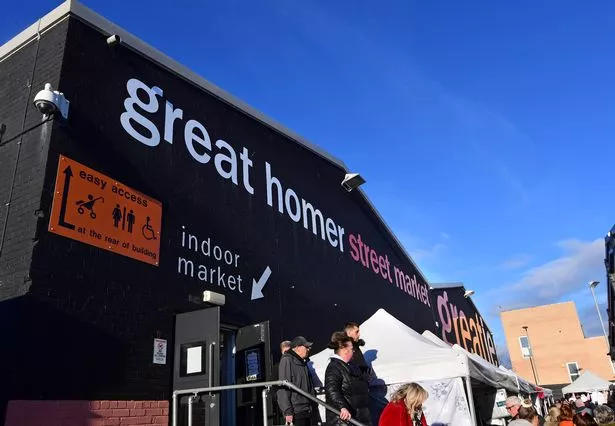 Greatie Market on Great Homer Street(Image: Photo by Colin Lane)
Greatie Market on Great Homer Street(Image: Photo by Colin Lane)
Its official title is Great Homer Street Market, however this popular market is lovingly known as the Greatie. It’s been part of Liverpool’s history for more than 180 years and hundreds come every Saturday to buy fresh fruit vegetables, to shoes, fashion and furniture.
The market based in Everton is renowned in the UK with many stall holders being based there for more than two decades. Before its relocation in 2014 to make way for the huge Project Jennifer scheme, the market would sprawl across both sides of Great Homer Street and it was primarily outside.
7. The Swan – Old Swan
This area’s name dates much more recently than many other parts of Liverpool. It comes from The Old Swan Inn in the area in the 1820s.
It was rural until the 19th century, with a settlement developing around the coaching inn. Like ‘The Asda,’ Old Swan is known to many as ‘The Swan.”
6. Caldies – Calderstones Park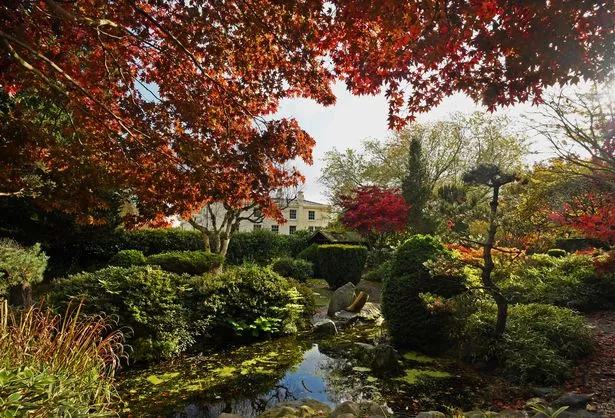 Beautiful autumn colours at the Japanese garden in Calderstones Park(Image: Colin Lane/Liverpool Echo)
Beautiful autumn colours at the Japanese garden in Calderstones Park(Image: Colin Lane/Liverpool Echo)
One of the most popular and beautiful public spaces in Liverpool, Calderstones Park has long welcomed visitors and is steeped in history. Located in Allerton, the park is named after six Neolithic boulders that were discovered at the site in the 18th century.
Inside, you’ll also find the Grade II listed Mansion House, built in 1828. It is often referred to by the shortened nickname of ‘Caldies.’
5. Sevvy park – Sefton Park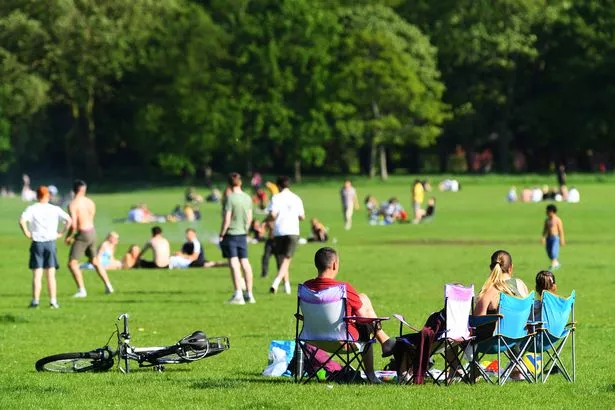 People relaxing in the sunshine in Sefton Park, Liverpool(Image: Andrew Teebay/Liverpool Echo)
People relaxing in the sunshine in Sefton Park, Liverpool(Image: Andrew Teebay/Liverpool Echo)
Sefton Park is famous across our region and sees thousands visit every week. Now over 150 years old, the popular south Liverpool park has seen much change, but it’s beauty and popularity hasn’t ceased.
Sefton Park historically formed part of the ancient Toxteth Deer Park until the 375 acres of land were purchased by the council from the Earl of Sefton in 1867. Some ECHO readers previously mentioned they refer to the park by the nickname above.
4. Paddy’s Wigwam – Liverpool Metropolitan Cathedral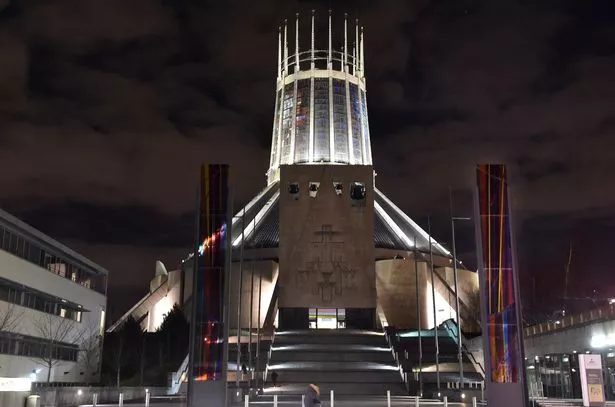 The Metropolitan Cathedral, Liverpool (Image: Mirrorpix)
The Metropolitan Cathedral, Liverpool (Image: Mirrorpix)
The Metropolitan Cathedral – colloquially known in Liverpool as Paddy’s Wigwam – is also Britain’s largest Catholic cathedral. The cathedral has been a dominant figure in Liverpool’s skyline since it was completed in 1967.
Attracting more than 350,000 visitors each year, the cathedral was built on the site of the Liverpool Workhouse, the largest in the world when it was in operation. Building materials for the cathedral included a whopping 300 tonnes of marble and 30,000 tonnes of concrete.
3. The view – Everton Brow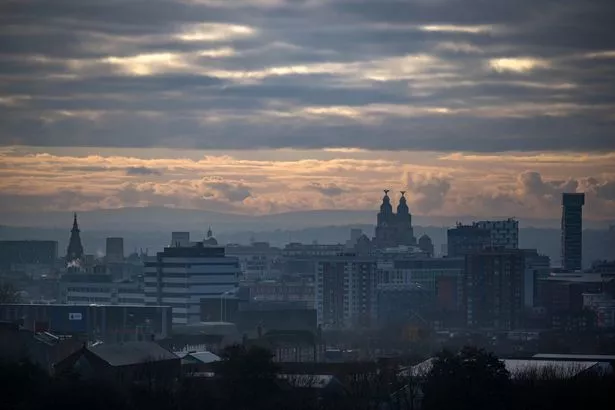 A general view of the Liverpool skyline and cityscape from Everton Brow(Image: Getty Images)
A general view of the Liverpool skyline and cityscape from Everton Brow(Image: Getty Images)
Everton Brow has long attracted visitors. Located within Everton Park, it boasts panoramic views around the city and the surrounding area.
Due to this, it is known to many as ‘the view.”
2. Marksies – Marks & Spencer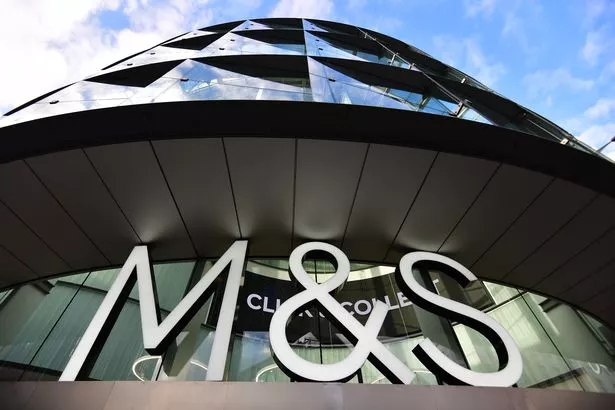 Marks & Spencer’s in Liverpool(Image: Liverpool ECHO)
Marks & Spencer’s in Liverpool(Image: Liverpool ECHO)
Marks & Spencer has long been a favourite with Scouse shoppers. So much show, loyal shoppers affectionately call it ‘Marksies.’
One of the city’s most popular branches through the generations was its Church Street shop, which relocated after 95 years back in 2024. The new store is located in the former Debenhams, which opened with the launch of Liverpool ONE back in 2008.
1. Prinny Eddie – Prince Edwin Street
And here is our final suggestion from ECHO readers. Prince Edwin Street is located off Great Homer Street, home to the famous Greatie Market.
But locals sometimes refer to the area as ‘Prinny Eddie.’ This is obviously a shortened down version of both names featured.
